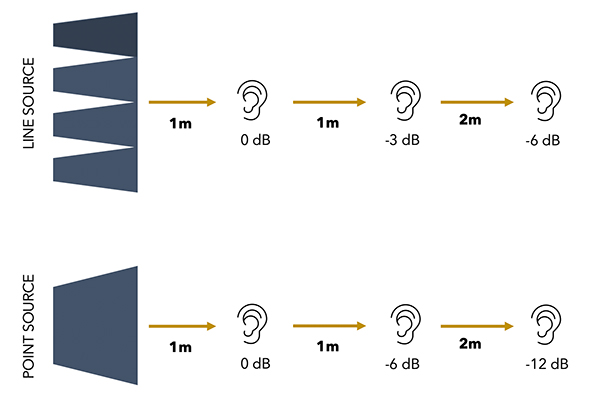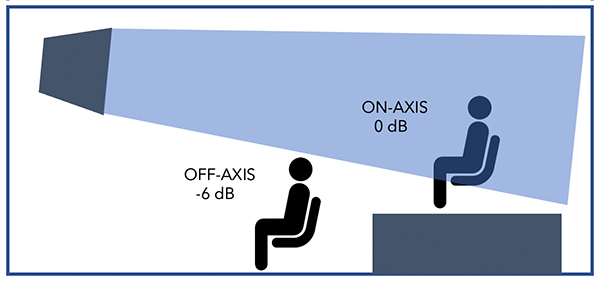TECHNICAL FOCUS – AUDIO DESIGN & ACOUSTICS
Acoustic and Audio System Design for Small Rooms- Part 4
By - Rahul Sarma, CEO, Menura Acoustic Labs in collaboration with Sound Wizard

In Part 3 of the series, Rahul spoke about the science behind absorption and diffusion and how to effectively use both to achieve the desired targets for a particular space. Having explored small room design from an acoustic perspective, this part 4 of the series explores the electro-acoustic considerations for a space.
We will move into electro-acoustic considerations for a space. We will begin with an exploration of two main system design goals which will determine the entire design direction for a project.
Target SPL (Sound Pressure Level)
While this may seem like quite an obvious design goal, it is often (and surprisingly) overlooked, especially for “hi-fi” home cinema design. Determining the desired SPL level at the listeners position based on the application is the first step towards determining system requirements. For example, Dolby Atmos guidelines require 105 dB continuous SPL for each LCR speaker and 103dB SPL for each surround speaker at a reference listening position. It follows reason that amplifier and speaker selection can only begin after identifying this target and understanding how sound propagates from a speaker to any point in a room. The measured SPL at the listening position can be affected by the placement of speakers, angling, and the amount of acoustic treatment in the room.

It is also extremely important to incorporate headroom into your calculations, since adequate headroom is the best way to ensure a system is robust and not susceptible to damage from sudden spikes in SPL. Headroom simply describes the difference between the maximum system power and the power of the maximum signal the system is asked to handle. A system that is not constantly driven to its limit will have longevity and subsequently face less down-time over its lifetime. Dolby Atmos guidelines recommend 3dB of headroom, which essentially amounts to double the amplification! Since dB is measured on a logarithmic scale, 6dB of headroom requires 4 times the calculated amplifier power. As you can see, headroom can be a significant investment, so it is important to plan for it right from the start.
The inverse square law describes the loss over distance in free field as 6dB SPL for every doubling of distance from the source. The reduction is lower indoors due to reflection from other surfaces, although a highly absorbent room will still result in a significant loss over distance. To further complicate matters, we perceive a reduction of a source by 10dB to be half as loud. In a control room or listening room with a single seat/row of seats, this isn’t a problem. When a listening space has multiple rows, however, this becomes a serious consideration. A 10dB difference from the first to last row of a listening space is just not palatable, because it means that people seated in different parts of the room will have wildly differing listening experiences. There are a few ways to address this issue, through speaker selection as well as positioning/aiming. The 6dB per doubling of distance is made based on the assumption that the speaker is a point source and hence produces a spherical wavefront. A line source, however, produces a cylindrical wavefront which results in a reduction of only 3dB per doubling of distance (Fig. 1). Line arrays have been the clear choice for large venues for a long time, but advancements in speaker technology mean that ultra-small line arrays are not out of place in small rooms any more.

When using a point source, understanding the nuances of loudspeaker coverage are the key to optimizing your design. Sound Systems: Design and Optimization by Bob McCarthy is must read for system design engineers, and it goes into great detail about the following topic. In brief, however, speaker coverage angle is the angular spread from on-axis (0 dB) to off-axis(-6dB). The image below illustrates this concept. Using this knowledge to our advantage, loudspeakers can be aimed to listener seats at the rear so that they are on-axis (0dB), which compensates for the loss with distance described by the inverse square law.
The seats in the front can be off-axis(-6dB), so that the SPL measured at these seats will no longer be much higher than the seats at the back (Fig. 2). This may be an over-simplification of the process, and it may not apply to all situations, but it still gives you an insight into the strategies used to achieve a target SPL at listener positions.

Desirable frequency response
An in-depth understanding of the frequency response of a speaker (measured at a listening position) is a pre-requisite to any form of acoustic or system design for a critical listening environment. Fig 3 describes the relationship between frequency and types of sound sources, in order to help cement this concept in your mind. We already discussed the frequency spectrum as it relates to acoustical design, but it is no less relevant to system design.

Changes or tweaks to a system that can demonstrably effect the measured frequency response are usually the best way to invest time and money into system design. The performance of a system over the frequency range is what determines its tonality. Fig 4 is a visual representation of this concept.
A relatively flat frequency response is the ultimate design goal for a system, since it results in a “transparent” output. In other words, you will experience content in the way the content creator intends you to, assuming of course that the content was created in a professional listening environment! It is also important to try to achieve a consistent frequency response across all listening positions, although this may not always be possible.